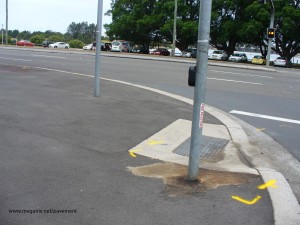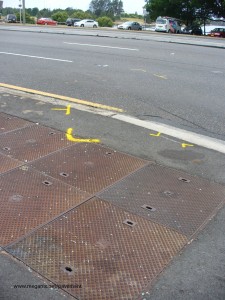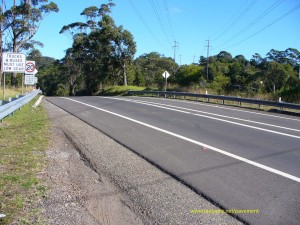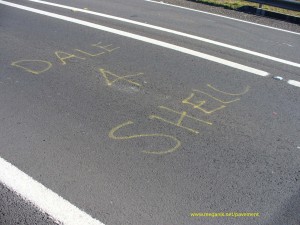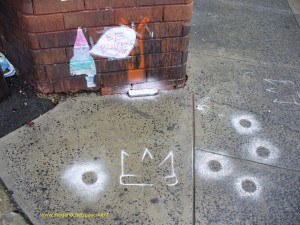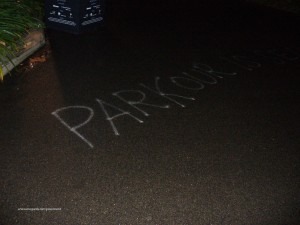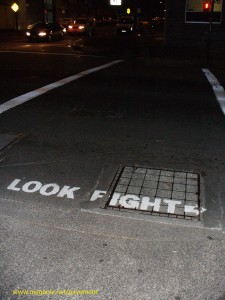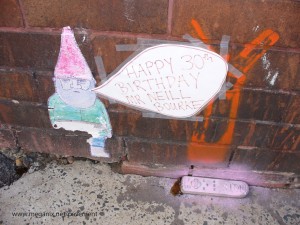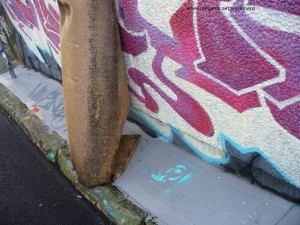 The wall art in May Lane is often in the news. This time it’s on page three of the Sydney Morning Herald because there is going to be a national tour of panels from this laneway in St Peters, setting off in October. It all started about five years ago with Tuli Balog encouraging graffiti writers to do pieces on the wall of his picture-framing factory. Kurt Iveson has written about it in his book Publics and the city (Blackwell Publishing, 2007).
The wall art in May Lane is often in the news. This time it’s on page three of the Sydney Morning Herald because there is going to be a national tour of panels from this laneway in St Peters, setting off in October. It all started about five years ago with Tuli Balog encouraging graffiti writers to do pieces on the wall of his picture-framing factory. Kurt Iveson has written about it in his book Publics and the city (Blackwell Publishing, 2007).
 But the graffiti on the pavement in May Lane is never mentioned. Walk up and down the lane, though, and you will find all sorts of deliberate and accidental art decorating the gutters, along with the signatures of people whose wall pieces have long since been covered over.
But the graffiti on the pavement in May Lane is never mentioned. Walk up and down the lane, though, and you will find all sorts of deliberate and accidental art decorating the gutters, along with the signatures of people whose wall pieces have long since been covered over.
POSTSCRIPT – Since I wrote this post, May Lane has become the subject of discussion at Marrickville Council (not for the first time). Here’s a report by an onlooker of the discussion at the meeting on 9 November 2010. It’s on the Saving Our Trees website, although I don’t quite get the connection.

